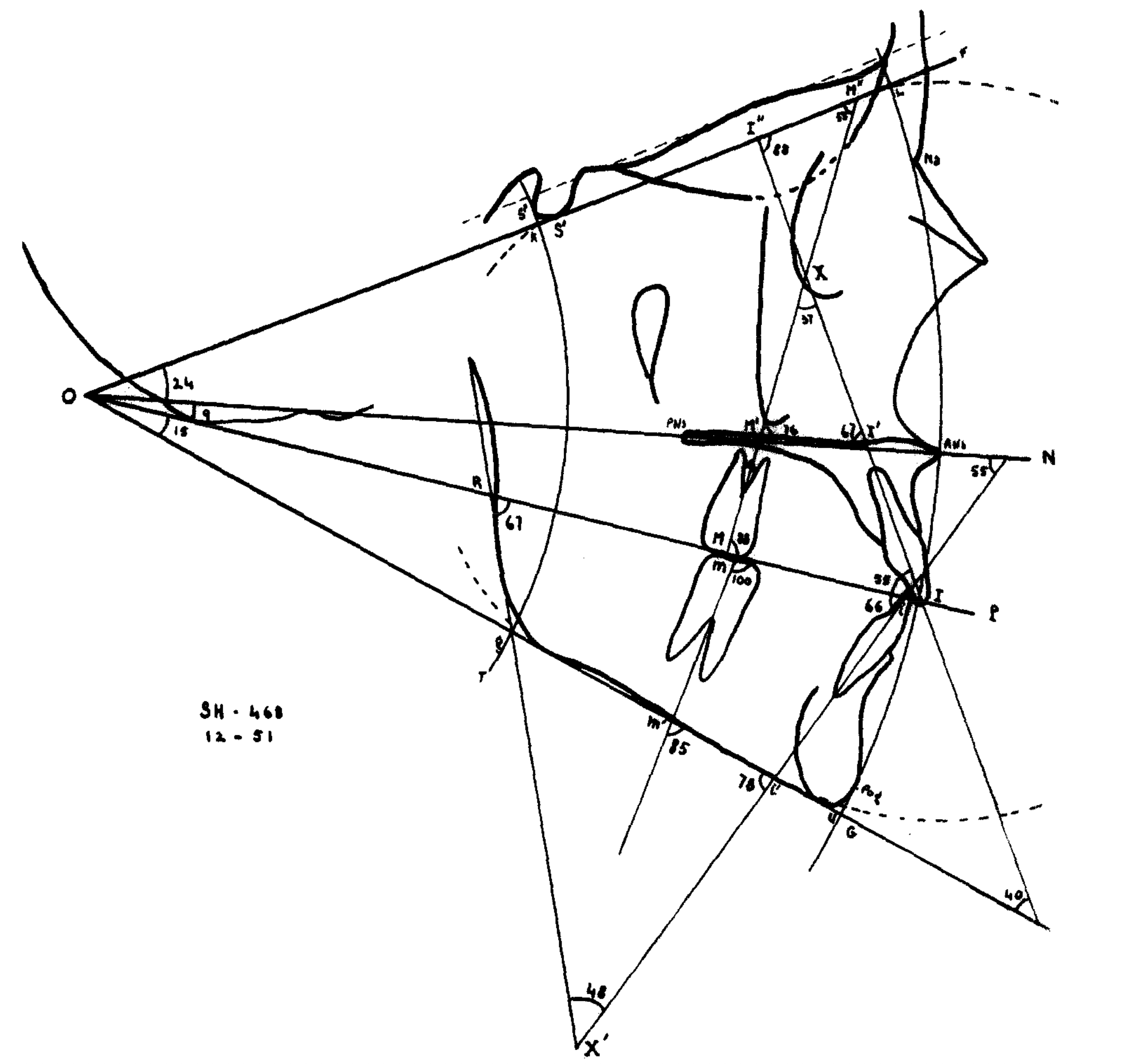
The study is based on tracings of 100 lateral ceph xrays of 51 girls and 49 boys with ages ranging from 7 to 15 years of age, all white and mostly of Mediterranean origin. Sixteen of the radiographs were found to be having a normal occlusion or a well-proportioned facial pattern. The rest of the radiographs do not have a well-proportioned face.
The analysis involves four planes, mandibular base plane, occlusal plane, palatal plane and anterior cranial base plane. In a well proportioned face, all planes converge posteriorly at a common point O and two arcs, anterior and posterior. With point O as a center, the anterior arc passes through the anterior nasal spine, nasion and the fronto-ethmoid junction. For the posterior arc with point O still at the center, the arc passes through the posterior wall of the sella turcica and through the gonion. The arcs tell about the skeletal profile of the face. All the points passing through the anterior and posterior arcs are equidistant to point O in their respective arcs. It can be said that the anterior cranial base and corpal length of the mandible are equal in length and position to point O. The palato-cranial angle is equal to palato-mandibular angle. The occluso-palatal angle is between 1/1 and one-half the occluso-mandibular angle. The occluso-mandibular angle is always larger than the occluso-palatal angle in a well proportioned face. A well proportioned face shows that the palatal plane is equidistant from the anterior cranial base plane and the mandibular base plane. Sassouni concluded that a well-proportioned face has a normal occlusion.
Sassouni’s analysis has been an important part of the analysis of the patient’s face, including the divergence of horizontal planes and vertical proportions.
Beyond orthodontics, he also suggested the usefulness of the analysis in prosthetics (determination of the occlusal plane and axial inclination of teeth), oral surgery (mandibular resection or operation of cleft palate), periodontics (selective grinding effects to the occlusal plane) and genetics (facial patterns through generations).
